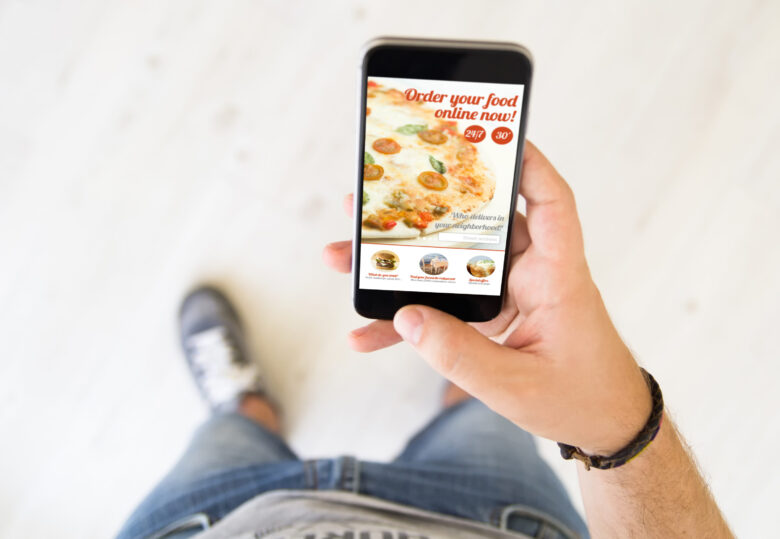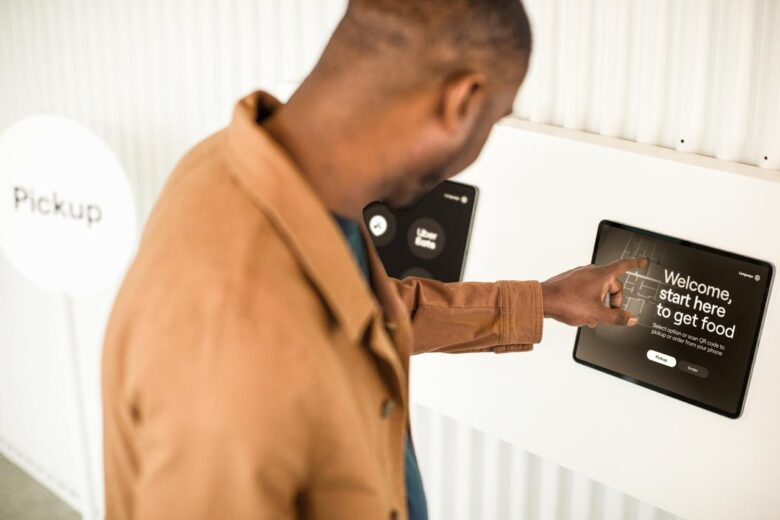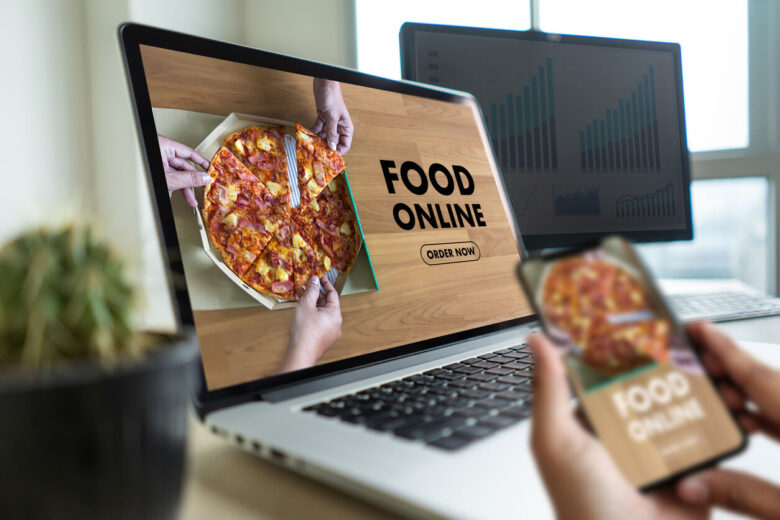Are you hungry for success in the restaurant industry? Then it’s time to spice up your online ordering game! As consumer preferences for diners continue to evolve, restaurants must embrace change to stay competitive. With delivery services booming and outdoor seating becoming more popular on premises dining, it’s crucial for eateries to adapt their offerings. But how can they do that? The answer lies in menu analysis and understanding customer needs for foods.
By analyzing menus, restaurants can identify trending ingredients and options that cater to changing tastes in foods. This allows them to switch things up and offer a variety of choices that satisfy diners’ ever-changing cravings. Moreover, providing pickup and delivery options with easy substitutions ensures convenience in today’s fast-paced environment, especially for premises dining and ghost kitchens.
Technology plays a vital role in revolutionizing the dining industry, enabling seamless online ordering experiences for diners. By adapting their platforms and embracing evolving customer preferences, restaurants can create an enticing digital environment that keeps customers coming back for more delicious foods. In modern kitchens, this is made possible by the integration of innovative technologies.
So let’s dive into the world of adaptable restaurant online ordering system and discover how it satisfies both diners’ appetites and expectations with its diverse dining options, extensive menu analysis, and a wide variety of delicious foods!

Source: fashiongonerogue.com
Contents
- The Impact of Changing Consumer Tastes on Restaurants
- Digital Ordering: Revolutionizing the Restaurant Industry
- Aligning Marketing and Ordering Technology for Success
- Optimizing Time and Labor with Automation Technology
- Capturing Customer Data for Enhanced Experiences
- Staying Ahead by Adapting to Changing Consumer Preferences
The Impact of Changing Consumer Tastes on Restaurants
Understanding how shifting consumer preferences affect the restaurant business is crucial for restaurant operators. With many restaurants competing for consumers’ attention in the dining industry, it becomes essential to adapt menus and offerings to cater to changing tastes in foods. This includes making substitutions to accommodate consumer demands.
In today’s digital age, social media and food trends heavily influence consumer choices. Consumers are constantly exposed to enticing images and recommendations online, which can significantly impact their cravings and dining decisions. For restaurant owners, keeping up with these trends is vital to stay relevant and attract guests. Menu analysis and attention to ingredients are key in meeting the expectations of consumers.
One major change in consumer preferences is the increasing demand for online ordering. As more consumers opt for convenience, restaurants have had to adapt by implementing efficient systems for taking orders online. This shift has also led to the rise of ghost kitchens, which focus solely on delivery or takeout orders without traditional premises dining. Menu analysis and substitutions of ingredients have become crucial in meeting the evolving demands of consumers.
To meet the changing tastes of guests, restaurants must be flexible in adapting their menus accordingly. They need to offer a variety of food options that cater to different dietary preferences and restrictions. Whether it’s vegan or gluten-free alternatives or incorporating trendy ingredients like avocado or quinoa, providing diverse choices ensures that all consumers find something appealing. Additionally, implementing an online ordering system can further enhance the dining experience for guests.
Moreover, customer feedback from modern consumers plays a significant role in shaping menu changes for restaurants with an online ordering system. By actively listening to consumers’ suggestions and preferences, restaurants can make informed decisions about what foods or dishes should be added or removed from their menus.

Source: totalfood.com
Digital Ordering: Revolutionizing the Restaurant Industry
The restaurant industry has witnessed a significant transformation with the rise of digital ordering platforms, which has led to an increased need for menu analysis. These platforms have revolutionized the way customers order food and how restaurants operate. By adapting to changing customer preferences, online ordering systems have become essential for restaurants looking to thrive in today’s competitive landscape.
One of the key advantages of a digital ordering system is the enhanced convenience it offers to customers. With just a few taps on their mobile devices, diners can easily browse through menus, place orders, and choose between pickup or delivery options. This streamlined process saves time for both customers and restaurant staff, resulting in increased efficiency.
Furthermore, online ordering systems have proven to boost sales for restaurants. By providing an additional avenue for customers to place orders, establishments can cater to a wider audience beyond their physical location. This expansion opens up opportunities for virtual restaurants that solely operate through online platforms. These virtual restaurants can experiment with specialized menus or cuisines without the need for a dine-in space.
Restaurants have various options. Some popular choices include:
- Mobile apps: Restaurants can develop their own branded mobile apps that allow customers to conveniently place orders and track their progress.
- Third-party delivery services: Collaborating with established delivery platforms enables restaurants to tap into existing customer bases while outsourcing the logistics.
- In-house online ordering portals: Restaurants can create their own website portals where customers can browse menus and place orders directly.
As more consumers embrace digital transformation in all aspects of life, the restaurant industry must adapt accordingly. By embracing online ordering systems, establishments can stay ahead of competitors and cater to changing customer preferences effectively. One way to do this is by offering a user-friendly and easily accessible online menu for customers to browse and place their orders.

Source: totalloyalty.com
Aligning Marketing and Ordering Technology for Success
Integrating marketing strategies with online ordering technology is crucial for restaurant operators to adapt to changing customer preferences. By aligning these two elements, restaurant operators can effectively cater to the needs of their customers while staying ahead in the competitive market. The menu plays a significant role in this integration process.
Utilizing data analytics in an online ordering system plays a critical role for restaurant operators in understanding customer preferences and targeting marketing efforts effectively. By analyzing customer behavior and order patterns in the menu, businesses can gain valuable insights that help them tailor their promotions and advertising campaigns. This omnichannel approach ensures a personalized experience for customers, leading to increased satisfaction and loyalty.
Enhancing the customer experience for restaurant operators through personalized promotions and targeted advertising is another key aspect of aligning marketing and ordering technology. By leveraging data analytics, restaurant operators can create customized offers based on individual preferences, previous orders, or demographics. This targeted approach not only boosts sales but also strengthens customer relationships and improves the menu.
In addition to these talking points, there are other considerations that need attention when aligning marketing and ordering technology. One of the key considerations is the menu, as it plays a crucial role in attracting customers and driving sales. Another important aspect is understanding the needs and preferences of our target audience, which will help us tailor our marketing and ordering technology accordingly. By focusing on these aspects, we can ensure a seamless experience for our customers and maximize the potential of our marketing efforts.
- The integration of payment systems in the menu: Seamless integration between the online ordering system and payment platforms enables smooth transactions for customers.
- The importance of a user-friendly menu interface: An intuitive online ordering system with a well-organized menu makes it easy for customers to navigate, select items from the menu, customize their orders, and complete the checkout process.
- The need for an efficient back-end system: A well-designed back-end system ensures accurate order receipt by the kitchen staff or delivery personnel. This is crucial for our menu and helps us provide excellent service to our customers.
- The role of POS (Point of Sale) systems in the menu: Integration with POS systems streamlines order processing and inventory management for us.
By aligning marketing strategies with online ordering technology, businesses can adapt to changing customer preferences and enhance the overall dining experience. This approach drives growth in today’s competitive restaurant industry by optimizing the menu and offering a seamless ordering process.

Source: cloudkitchens.com
Optimizing Time and Labor with Automation Technology
In today’s fast-paced world, restaurant owners are constantly seeking ways to adapt their menu to changing customer preferences. One key area where adaptation is crucial is in online ordering. With the increasing demand for convenience and efficiency, restaurants are turning to automation technology to streamline their operations and meet customer expectations for an easy-to-use menu.
Automation technology in restaurants offers several benefits, especially when it comes to streamlining the menu order processing. By implementing automated systems, restaurants can significantly reduce wait times for customers. This means that orders from the menu can be received, processed, and prepared more efficiently, resulting in quicker service and happier customers.
Another advantage of automation technology is its ability to improve operational efficiency, especially when it comes to an online ordering system. Tasks such as inventory management and order tracking can be automated, eliminating the need for manual processes that are prone to errors or delays. By automating these tasks, restaurants using an online ordering system can ensure accurate inventory levels, reduce wastage, and maintain a smooth workflow.
Labor costs are a significant concern for many restaurant owners, especially in an era of labor shortages. Automation technology offers a solution by reducing dependence on manual labor while still delivering quality service. Automated systems can handle repetitive tasks that would otherwise require additional staff members. This not only saves money but also allows existing staff to focus on providing excellent customer service rather than being overwhelmed by mundane tasks.
By embracing automation technology in online ordering processes, restaurants can also make better use of their physical space. With limited staff available due to staffing shortages or budget constraints, automated systems enable restaurants to operate efficiently even with fewer employees or smaller locations.

Source: americanexpress.com
Capturing Customer Data for Enhanced Experiences
Leveraging customer data is crucial in adapting to changing customer preferences and creating enhanced experiences. By utilizing the valuable insights collected through online ordering platforms, restaurants can personalize their offerings and improve customer satisfaction.
Data analytics plays a pivotal role in understanding customer behavior, preferences, and trends for restaurants with an online ordering system. Analyzing this data helps restaurants with an online ordering system identify patterns and make informed decisions about menu items, promotions, and marketing strategies. By staying attuned to customers’ evolving tastes and demands, restaurants with an online ordering system can tailor their offerings accordingly.
Enhancing the overall guest experience is another advantage of capturing customer data through an online ordering system. With access to information such as previous orders, dietary restrictions, or preferred ingredients, restaurants utilizing an online ordering system can provide customized recommendations that cater to individual preferences. This personal touch not only increases customer satisfaction but also fosters loyalty to the online ordering system.
Furthermore, leveraging customer data allows restaurants to optimize revenue generation opportunities. By identifying popular dishes or frequently ordered add-ons, establishments can strategically promote these items to increase sales. Understanding peak ordering times enables efficient staffing and inventory management.

Source: tablesense.com
Staying Ahead by Adapting to Changing Consumer Preferences
In today’s dynamic restaurant industry, staying ahead means adapting to changing consumer preferences. As tastes and behaviors evolve, restaurants must embrace new strategies, such as implementing an online ordering system, to meet customer demands and remain competitive.
Digital ordering has revolutionized the way restaurants operate, providing convenience and flexibility for both customers and businesses. By leveraging technology, restaurants can streamline operations, enhance customer experiences, and drive growth. Aligning marketing efforts with online ordering technology is crucial for success in this digital era. It allows restaurants to reach their target audience effectively and create personalized experiences that resonate with customers.
Automation technology plays a pivotal role in optimizing time and labor management for restaurants. By automating tasks such as order processing, inventory management, and staff scheduling, businesses can improve efficiency while reducing costs. This enables them to focus more on delivering exceptional food and service.
Capturing customer data is a valuable resource for enhancing experiences and building brand loyalty. Restaurants can leverage this data to gain insights into customer preferences, tailor marketing campaigns, offer personalized recommendations, and deliver targeted promotions.
To stay relevant in the ever-changing landscape of consumer preferences, it is essential for restaurants to continuously adapt their online ordering systems. By embracing technological advancements and leveraging customer data effectively, they can provide seamless experiences that cater to individual needs.

Source: blog.shift4shop.com
In conclusion, as consumer preferences continue to evolve rapidly, it is imperative for restaurants to adapt their online ordering systems accordingly. Embracing digital technologies, aligning marketing efforts with online platforms, optimizing time through automation technology, and utilizing customer data are key strategies for success in this competitive industry.
